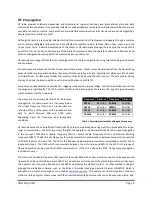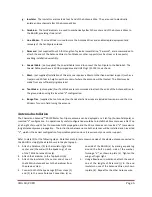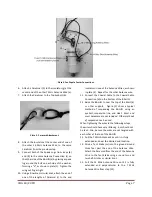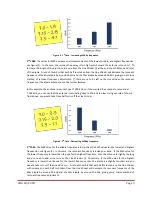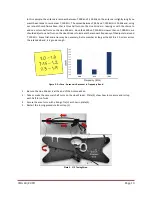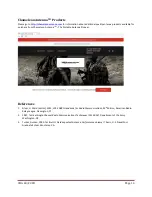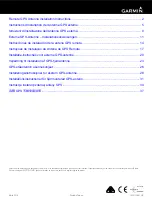
CHA 40/20 FD
Page 9
Figure 3. 1
st
Case - Increasing SWR by frequency.
2
nd
CASE:
The values for SWR decrease on all measurements of the lowest, middle, and highest frequencies,
see figure (4). In this case, the resonant frequency is too high, which means the antenna is too short. To
increase the length of the dipole, unroll wire from the Line Winder (i) at the end of each Antenna Wire (e)
of the dipole. A rule-of-thumb is that each half turn taken from the Line Winder will decrease the resonant
frequency of the 40m dipole by around 50 KHz and the 20m dipole by around 200 KHz, giving you a coarse
method of resonant frequency adjustment.
If there are no turns left on the Line Winder, the resonant
frequency of the dipole antenna cannot be further lowered.
In this example, the antenna is resonant near 7,300 KHz, so if you wanted the antenna to resonate at
7,150 KHZ, you can say that the antenna is resonating close to 150 KHz too low. Using our rule-of-thumb
from above, you would take three half-turns off the Line Winder.
Figure 4. 2
nd
Case - Decreasing SWR by frequency.
3
rd
CASE:
The SWR value for the middle frequency is lower than the SWR values for the lowest and highest
frequencies, see figure (5). In this case, the resonant frequency is inside your band. If the SWR value for
the lowest frequency is lower than the one for the highest frequency, then the antenna is slightly too long
and you need to add more turns on the Line Winders (i). Conversely, if the SWR value for the highest
frequency is lower than the one for the lowest frequency, then the antenna is slightly too short and you
need to take turns off the Line Winders. A rule-of-thumb is that each half turn made on the Line Winder
will increase and each half turn taken from the Line Winder will decrease the resonant frequency of the
40m dipole by around 50 KHz and the 20m dipole by around 200 KHz, giving you a coarse method of
resonant frequency adjustment.




